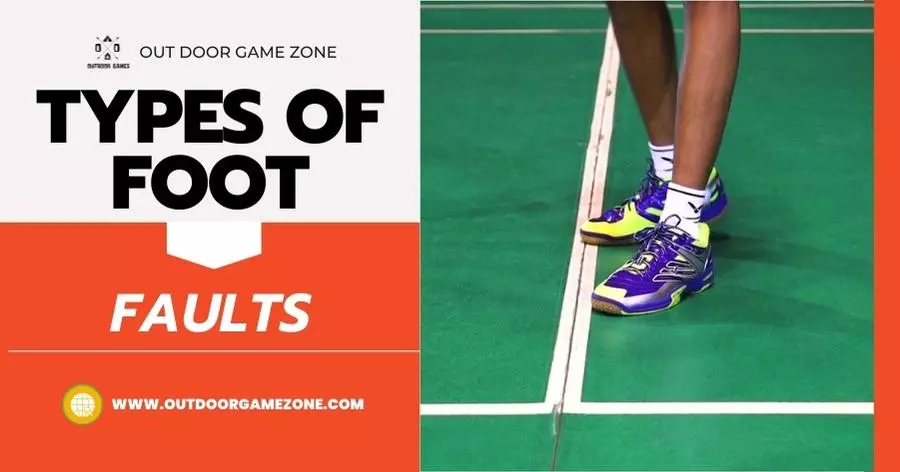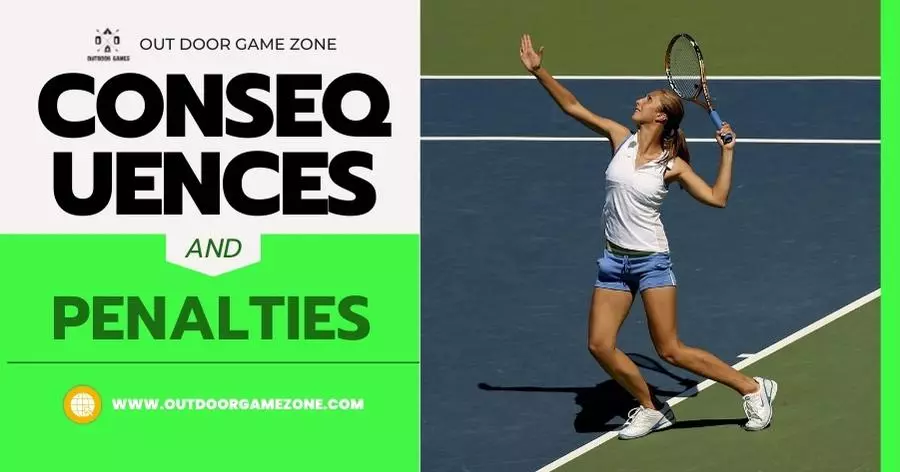A foot fault in tennis occurs when a server steps on or over the baseline while serving the ball. In tennis, a foot fault is called when the server fails to keep both feet behind the baseline during the serve.
This violation results in the server losing the point or receiving a fault. Foot faults are strictly monitored and enforced during professional tennis matches, ensuring fair play and adherence to the rules of the game.
Players must maintain their footing behind the baseline to ensure a legal and valid serve.
Understanding and avoiding foot faults is essential for tennis players to execute proper serves and maintain a competitive advantage during matches.
Types Of Foot Faults
What is a Foot Fault in Tennis? Foot faults are common infractions that occur in tennis when a player’s foot crosses over the baseline or service line during a serve. These faults can result in penalties, such as the loss of a point or even a double fault.
It’s essential for players to understand the different types of foot faults to avoid penalties and maintain fair play.

Let’s take a closer look at the three main types of foot faults: Baseline Foot Fault, Service Foot Fault, and Double Foot Fault:
1. Baseline Foot Fault
A baseline foot fault occurs when a player’s foot touches or crosses over the baseline before striking the ball. This type of fault commonly happens during groundstrokes and volleys when a player is trying to generate power and move quickly on the court.
In order to avoid a baseline foot fault, players must ensure that their back foot remains behind the baseline during the entire shot.
By maintaining the correct position, players can avoid any unnecessary penalties and keep the game in their favor.
2. Service Foot Fault
When it comes to serving the ball, the service foot fault can be a costly mistake. A service foot fault occurs when a player’s foot steps on or over the line marking the service box before making contact with the ball.
This fault is often the result of a player’s eagerness to gain an advantage by gaining extra momentum or trying to cover more ground on the serve.
However, it is crucial to remember that both feet must remain behind the service line until the ball is struck in order to avoid a service foot fault.
Related Post:
What is the Size of a Tennis Ball in Inches?
3. Double Foot Fault
The most severe foot fault in tennis is the double foot fault. As the name suggests, a double foot fault occurs when both feet cross the respective boundary lines, either the baseline or service line, simultaneously.
This violation results in an automatic loss of points, making it a critical error that players must avoid at all costs.
To prevent a double foot fault, players should focus on their footwork and ensure that both feet remain inside the boundaries while executing shots and serves.
Consequences And Penalties
Understanding the consequences and penalties of a foot fault in tennis is crucial to maintaining fair play on the court. Whether deliberate or unintentional, a foot fault occurs when a server fails to keep both feet behind the baseline during the serving motion.
This violation can result in various penalties, ranging from a lost point to disqualification from the match.

Let’s explore these consequences in detail:
1. Lost Point
A lost point is the most immediate consequence of a foot fault. When a server commits a foot fault, the point is award to the opposing player automatically, even if the serve was otherwise valid.
What is a Foot Fault in Tennis? This can be a significant setback during a match, as losing a point can have a direct impact on the overall score and momentum of the game.
2. Warning From The Chair Umpire
Prior to issuing a more severe penalty, the chair umpire will often issue a warning for the first occurrence of a foot fault. This is usually dose to notify the offended and allow them an opportunity to correct their foot positioning for subsequent serves.
The warning serves as a reminder to players of the importance of adhering to the rules and helps maintain a fair and competitive environment.
3. Code Violation
If a player continues to commit foot faults after receiving a warning, they may be issued with a code violation. This is a more severe penalty and can result in various consequences based on the tournament or match rules.
Commonly, a code violation leads to a loss of a point or even a deduction of a game or set, shifting the balance of the match heavily in favor of the opposing player.
4. Disqualification
In extreme cases where the foot fault violations persist or the player shows a lack of sportsmanship, disqualification can occur. This severe penalty involves the player being remove from the match entirely, resulting in an automatic loss.
Disqualification is usually reserve for repeated or intentional foot faults that demonstrate a blatant disregard for the rules of the game.
It’s essential for players to be aware of the potential consequences of foot faults and strive to avoid them altogether.
By maintaining proper foot positioning during the serve, players can prevent not only the loss of a point but also the more severe penalties of warnings, code violations, and even disqualification.
Upholding fair play ensures the integrity of the game and promotes a positive and competitive atmosphere on the tennis court.
Frequently Asked Questions For What Is A Foot Fault In Tennis
What Is Considered A Foot Fault In Tennis?
A foot fault in tennis occurs when the server’s foot touches or crosses the baseline before making contact with the ball.
How Is A Foot Fault Determined By The Umpire?
The umpire determines a foot fault by closely observing the server’s feet during the serve and making a call if any violation is detected.
Can A Player Be Called For A Foot Fault During A Match?
Yes, a player can be called for a foot fault during a match if the umpire or linesperson notices the violation during the serve.
What Are The Consequences Of A Foot Fault In Tennis?
A foot fault results in a fault being called, which means the server loses the point and gets a second-serve opportunity.
Conclusion
A foot fault in tennis occurs when a player’s foot touches or crosses the baseline before the serve is complet. Understanding and avoiding foot faults are crucial for maintaining fair play and preventing penalties in tennis matches.
By staying mindful of their foot position during serves, players can ensure they adhere to the rules and enhance their overall game.
So, Practice, awareness, and commitment to the rules are key to avoiding foot faults and improving one’s performance on the court.










